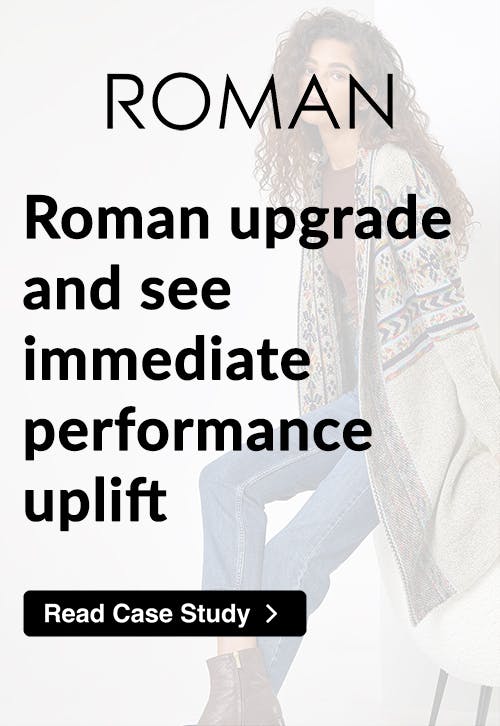

The Basics of Email Marketing for Fashion Retailers
All businesses in the retail industry must be engaging with their customers as often as they possibly can; this is common sense. However, knowing this and achieving it are two different things. One essential avenue to go down is email marketing as this can communicate with your customer – either existing or new – throughout their customer journey by notifying them about new products, payment confirmation and shipping notifications to name but a few. These strategic marketing emails are essentially used to reinforce branding with the aim of increasing conversion rates by improving customer retention and trust.
This article will outline the importance of email marketing for retailers by highlighting its benefits and top tips on how to create an effective email marketing campaign.
Why use email marketing campaigns?
Despite email marketing being older technology than social media platforms and digital ad networks, it continues to demonstrate outstanding results as it is well documented for seeing a return on investment (ROI).
Although all retail businesses require a diverse marketing strategy that can be implemented via various channels, email marketing must be the main priority as it can directly influence customer acquisition, conversion rates and overall consumer activity. The reason for this is due to its personal approach as these personalised emails can be automated depending on who you wish to send these emails to, which could include new customers, current customers or customers with a certain demographic.
Crucially, it also allows you to use email automation, providing the opportunity to send emails automatically which is a great time saver. Putting this into practice, if someone was to make a purchase, add an item to their shopping basket or sign up for updates/newsletters, they could automatically receive a pre-determined series of emails. These emails can create a personal tone between a retailer and their customer as it allows for contact throughout the customer journey. In turn, this generally leads to a high ROI as these emails are sent subject to a subscriber’s behaviour over a given time period.
Most retail customers actively wish to receive frequent updates in relation to their orders, along with any potential promotions and sales which may be of interest to them. Automated emails are the perfect solution to meet these requirements and due to them being ‘trigger-based’, they will be sent due to an action the customer has performed. Email automation is essential as it provides retailers with the ability to plan and action an effective email marketing strategy.
How is email automation being used?
Email automation is implemented in a variety of ways in order to engage with customers as a response to their actions and retrieving the required information to plan successful marketing campaigns. Some of the most common types of emails include:
Order confirmations/updates
Shipping notifications
Email address confirmations
Welcome emails
Shopping basket abandonment emails
Registration confirmations
Review request emails
Support notifications
Anniversary emails
Password reset emails
Related product emails
Purchase receipts
Several of these email types can be explained further…
Welcome emails
These are most commonly sent out to potential customers once they sign up for a free newsletter from a retailer’s website. It is essential that these emails are personal and are genuinely perceived as a warm welcome. However, according to research, 96% of visitors to your website are not necessarily ready to purchase products from you. For this reason, it is equally important to have an attractive design that clearly shows your products which potentially increases your chances of turning sessions into conversions.
Order updates and shipping notifications
These emails are arguably the most important ones to send out. Once a product has been purchased by a customer, they will want to know that their order has correctly been processed. These emails should also include a confirmation number, which can be used to track their order so that they have an idea of when their products will be delivered. As these emails contain information that customers need to be aware of, the open and click-through rates are high, potentially resulting in increased customer interaction and sales.
Shopping basket abandonment emails
It is believed that over 60% of shopping baskets online are abandoned once items have been added to them, which is potentially an awful amount of income being lost. A solution to this problem can be the use of automated emails. These emails are essentially used as a nudge, as they remind the potential customer that they have items in their shopping basket and quite often provide directions of how to complete the transaction. These will also include images of the product to make the potential sale look more desirable.
Anniversary emails
An anniversary email can be used as a personal approach by making the customer feel as though you have gone the extra mile for them. Quite often, these are sent on the customer’s birthday to commemorate their special day and can be easily automated subject to you having their date of birth. Not only is this a pleasant reminder for customers to engage in your brand, but you can also choose to offer discounts to further encourage your products being purchased.
Review request emails
Your brand’s image is everything. One approach to enhance your branding is to retrieve reviews from your customers (subject to your confidence in your overall products and service are to the required standard!). The most common reviews services are via ‘Google Reviews’ and reviews.io. You could therefore send a customer an automated email after a certain time period after purchasing a product to ask for a star rating and feedback.
These are effective as Google Reviews will be shown on the first page of Google, while reviews.co.uk will be visible on your website. These reviews act as trust signals, and the more trustworthy your brand, the more likely it is that customers will buy your products.
How do you retrieve customer emails?
There are several avenues you can go down to retrieve customer information. However, the first piece of information you will need is their email address as without it you cannot send them an email. The most common strategies of achieving this is by having a ‘mailing list’ section on your website for your customers to actively sign up to or ask if they would like to be kept up to date with new products when they checkout.
How does automation with integrations work?
Integrations can be implemented to personalise your email campaigns depending on the information of your customer(s). This actions and behaviour completed by a user will trigger specified emails being sent out to your customers which can include information such as:
Age, Gender or Location demographic
Category/product browsing
Interests and other websites visited
Purchase history
Retrieving this information in order to send personalised emails is a highly effective strategy and one of the most common methods in email marketing, especially in retail. The results from these email campaigns are outstanding, as those with personalised subject lines are believed to be 26% more likely to be opened with a 760% increase in email revenue from segmented campaigns. Customers that have emails tailored to them are therefore more likely to open your emails, visit your website and purchase your products.
How do you catch your customer’s attention with email campaigns?
In order to catch a potential customer’s attention with email campaigns, it is essential that they are attractive with your branding at the forefront. This is especially true in retail. As these emails essentially reflect your branding, the design must be as close to perfect as possible as anything less will most likely end up in the junk folder. Here are several must know tips to get you started:
1. Branding is everything
No doubt you have spent a lot of time and hard work perfecting your branding – do not let this go to waste! Your brand is what will gain income as this is what your customers will be familiar with, creating a sense of security and trust. A practical approach is to base your email campaigns on the house style of your website; using the same logos, font, colours, layout design and images to replicate your branding to ensure these emails look as though they are indeed being sent by you. Before you do anything, make sure your branding is the main priority with your email campaigns.
2. Make your emails clear and concise
When receiving marketing emails, people tend to skim read them until they find a section which is of interest. For this reason, your emails must be easy to digest. This means that you must write content that is clear, concise and convincing. It is advisable to use a large font with strategically placed headers to help get your message across. This leads on nicely to our next tip.
3. Use bold, interesting imagery
In order to engage your audience, the imagery you use must be bold and interesting so that your branding is taken seriously. The most engaging emails include compelling text alongside relatable images with a strong call to actions to influence a potential customer to buy one of your products. Make sure to thoroughly read your emails once you have written them up and be as critical as possible; if you do not find it interesting, chances are neither will your audience.
4. Prioritise for Mobile
As technology is constantly evolving, most people now look at their emails via their mobile phone; most commonly either iPhone or Android. In fact, it is believed that over 50% of emails are opened on mobiles. It is therefore wise to write your email campaigns to ensure that they are mobile friendly. Failing to do this could lead to the email layout looking disjointed when opened on a mobile, which will inevitably cause your audience to delete the email as soon as they receive it.
5. Trial and error can go a long way
Quite often, it can be difficult to decide what your audience will respond well to, which is why A/B testing can be vital. This allows you to test two different email variants to determine which has higher open and click-through rates. Once you know which campaign is more successful, you can then base your future campaigns on this for a higher chance of success.
Where to Start?
Using the right balance of automation and personalisation along with a striking design that reflects your branding can potentially lead to you creating successful marketing campaigns that target specific customers to essentially purchase your products.
If you want to find a starting point to create your email marketing campaigns, click here to find a list of all Email Marketing systems which the Remarkable Commerce Platform integrates with.
Considering Emarsys, Bronto or Ometria?
At Remarkable Commerce, we have integrated well over 30 different ESP (email sending platforms) over the last 20 years, including the three systems we are comparing in this article. Bronto – the Oracle-owned platform is a well-tested tool used by many mid-to-large retailers, Ometria – a high-end platform focused on customer engagement and content interaction, and Emarsys – a powerful and comprehensive system, perfect for larger direct marketing teams.
Watch our comparison video and read the full comparison article here.
